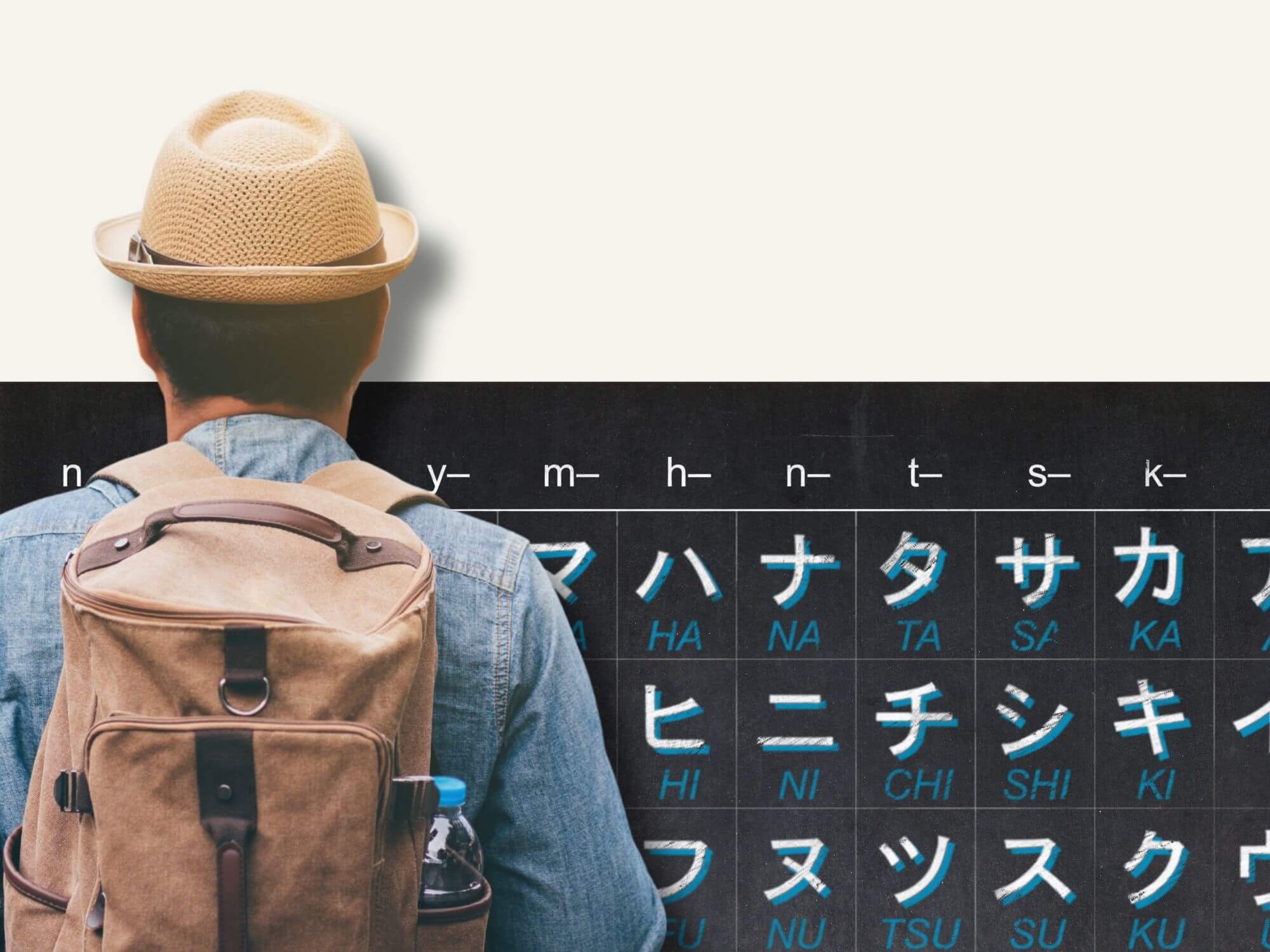Is Japan English-Friendly? Sometimes (so here are some tips)
I spend around half the year in Japan. I love the country, the people are amazing and the food is legit. While I can speak some basic Japanese to get around and make small talk, I still mostly rely on English (or the more common hybrid, ‘Japan-glish’).
But is Japan English-friendly?
This post dives into that question and shares some key tips for getting around (without needing any Japanese).
So let’s do this!
Table of Contents Show
Japan (language + demographics)
This probably isn’t too surprising, but Japan is mostly Japanese — 97.5% Japanese to be exact. So naturally, Japanese is the primary language you’ll hear when visiting.
It’s interesting to note though that Japanese has more than one dialect. So you may hear subtle differences depending on the region you’re in. The biggest difference is between the Kanto and Kansai areas (the Tokyo area vs. Osaka area, respectively).
For example, “okini” can be used in Osaka rather than the more commonly known “arigatou” for “thank you”.
So can you go to Japan only speaking English? Let’s keep moving (but spoiler, you totally can).
Explore more:
➤ Interesting Facts About Japan
Is Japan English-Friendly?
Japan is relatively English-friendly — especially in touristy areas or in major cities like Tokyo or Osaka.
You’ll find plenty of English signs and romaji translations, which are the roman spellings of Japanese words (such as “arigatou”). These romaji signs make it easier to at least look up the words for clarification.
Luckily, this makes getting around Tokyo and other busier areas of Japan pretty simple. But what about other places and situations? Well, it depends.
But here’s where you’ll typically find English:
Many restaurants have English menus
Major cities and touristy spots
Train station signs and Google maps
On-train announcements
English options on digital screens
And here’s where you may not find English (or at least, it’s more hit or miss):
Taxis
Countryside areas
Less popular, local restaurants and izakayas
Many shops, businesses and stores
Platform train announcements
Explore more:
➤ Etiquette In Japan to Know
How to Travel Japan Without Speaking Japanese (4 tips)
If you’re planning a trip to Japan, that’s epic. Here are some helpful tips to help with the language barrier.
1. Enunciate, Speak Slower and Use Simple Language
If a Japanese staff member says they speak “a little bit” of English (this is common), don’t assume they’ll understand native-level mumbling with advanced idioms and hyperfast speaking.
Slow things down, use simple language and enunciate your words.
This will make everything easier for everyone (you don’t need to dramatically slow down, but a little bit goes a long way).
2. Learn Some Basic ‘Survival’ Japanese
Knowing a little Japanese will go a long way. And don’t worry, it’s not hard.
After living in Tokyo for almost four year (cumulative), these are a few of the top phrases I’d recommend you memorize to make your travels easier:
Daijoubu(?)
It’s okay; are you okay?
Arigatou gozaimasu
Thank you
Sumimasen
Excuse me; I’m sorry
Eigo o hanashimasu ka?
Do you speak English?
Eigo menu wa arimasu ka?
Do you have an English menu?
Dōzo
Go ahead; for you
3. Use Google Translate or Jisho
While not perfect, using a translator app is perfect for getting out of a pinch and dealing with most simple travel situations.
Two of my go-to translators are Google Translate and Jisho.
Of course, the more complex your problem or sentence becomes, the less accurate the translation may be. So just use your best judgment (like keeping your sentences super simple).
Also, the Google Translate app lets you snap pictures for translation, which is incredibly helpful! Especially if you’re shopping for food.
So make sure you grab a SIM card or international phone plan before your trip so you have internet access while traveling around (so important!).
4. Hire A Local Guide (or meet local friends)
Meeting and traveling locals is a solid way to avoid the language barrier. Two ways I can think of doing this are:
Hire a local guide
Stay at a share house
Local guides or greeters can be especially smart if you’re traveling to remote areas. And share houses are great if you plan on staying for longer trips (over one month).
Share houses connect you with locals and other travelers, so it’s an awesome way to meet friends and locals. Often, the people you meet will either speak the local language or know how to navigate the city like a pro.
For local guides, check with the International Greeter Association to research some options.
Later ✌️
Japan is a relatively English-friendly country to visit. There are plenty of English signs, infrastructure and staff who can communicate with you. But these are mostly in busier areas like Tokyo or Osaka.
That’s why I recommend learning some basic survival Japanese and make sure you have internet access for using translation apps like Google or Jisho. Alternatively, you can meet locals or even hire a guide.
Either way, Japanese people are extremely warm and welcoming. If you’re struggling, they’ll do their best to help you — so just be sure to not speak too fast if they’re not confident with English.
And of course, enjoy your trip, Japan is an amazing and incredibly convenient place to visit!
Want More? Nice. Here’s More.




